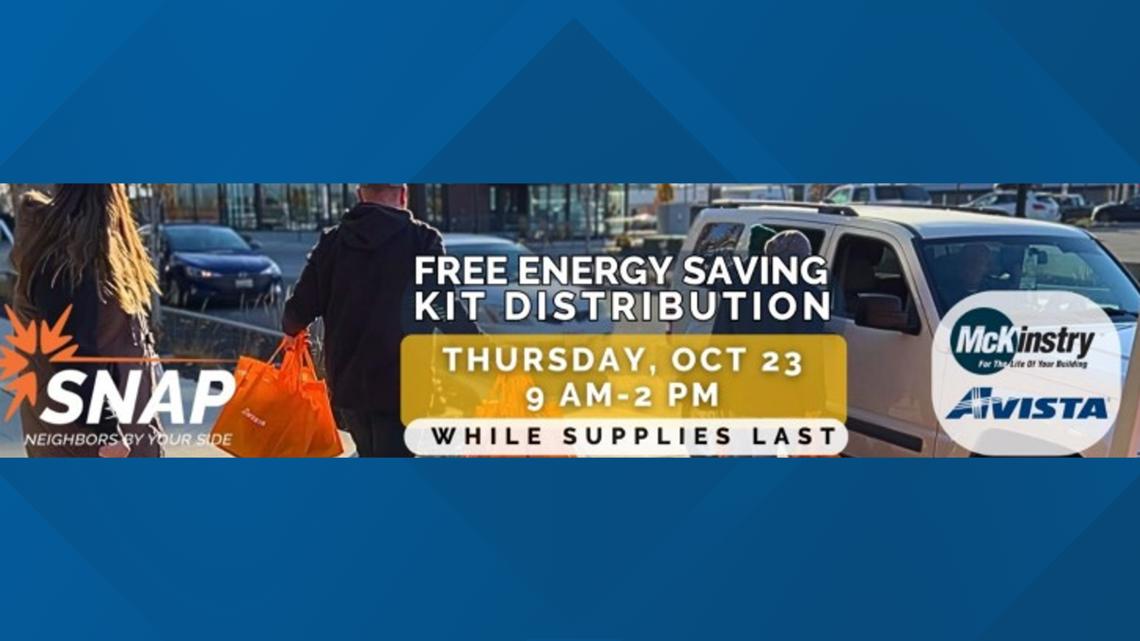Report on Community Energy Efficiency Initiative in Spokane
Introduction and Alignment with Sustainable Development Goals
This report details a collaborative initiative undertaken by SNAP, McKinstry, and Avista Utilities to distribute 1,000 free energy-saving kits in Spokane. The project directly supports several United Nations Sustainable Development Goals (SDGs) by promoting energy efficiency, alleviating poverty, and fostering community partnerships to address climate change and create sustainable communities.
Initiative Overview
On Thursday, October 23, between 9 a.m. and 2 p.m., a joint effort was launched to provide essential resources to Spokane residents to improve household energy efficiency ahead of the winter season. The distribution of these kits is a targeted intervention aimed at empowering residents to reduce energy consumption and lower monthly utility costs, thereby enhancing household economic stability and environmental sustainability.
Kit Contents and Contribution to SDG 7
Each of the 1,000 kits was assembled to provide practical tools for immediate energy conservation, directly contributing to SDG 7: Affordable and Clean Energy, specifically Target 7.3 which aims to double the global rate of improvement in energy efficiency. The contents included:
- Energy-efficient LED light bulbs
- Window plastic
- Door weather stripping
- Cloth draft stoppers
Partnership and Stakeholder Collaboration (SDG 17)
The success of this initiative is a testament to effective multi-stakeholder collaboration, a core principle of SDG 17: Partnerships for the Goals. The partnership leveraged the unique strengths of each organization:
- SNAP: Led the distribution and community outreach efforts.
- Avista Utilities: Provided the energy-saving kits and program support.
- McKinstry: Rallied volunteers to assemble the 1,000 kits.
Kelsey Solberg, community outreach program manager for Avista, stated, “Avista is proud to partner with SNAP and provide energy-saving kits for families in our community. These kits include simple but powerful items—like LED bulbs, window plastic, and door weather stripping—that empower residents to lower their energy use and monthly costs. We’re grateful for SNAP leading the charge and for McKinstry rallying volunteers to assemble the kits. Their partnership and dedication are essential to making this program a success!”
Broader Impact on Sustainable Development Goals
Beyond its primary focus on energy efficiency, the initiative makes significant contributions to other interconnected SDGs:
- SDG 1 (No Poverty): By reducing energy costs, the kits provide direct financial relief to low-income families, helping to alleviate poverty.
- SDG 11 (Sustainable Cities and Communities): The program improves the quality and sustainability of housing, making the community more resilient and affordable.
- SDG 13 (Climate Action): Promoting widespread energy conservation at the household level is a critical grassroots action that contributes to reducing overall greenhouse gas emissions and mitigating climate change.
Distribution Logistics
The energy-saving kits were distributed on a first-come, first-served basis at the following three locations:
- Catalyst Building – 601 E Riverside Ave, Spokane
- McKinstry Fabrication Shop – 9470 W 21st Ave, Spokane
- STA Plaza (Kiosk Area) – 701 W Riverside Ave, Spokane
Analysis of Sustainable Development Goals in the Article
1. Which SDGs are addressed or connected to the issues highlighted in the article?
- SDG 1: No Poverty – The initiative aims to help “families in need” by providing tools to lower their monthly energy costs, directly addressing financial burdens and contributing to poverty alleviation.
- SDG 7: Affordable and Clean Energy – The core purpose of the kits is to promote energy efficiency. By providing “energy-efficient light bulbs” and other tools, the program supports the goal of ensuring access to affordable and sustainable energy.
- SDG 11: Sustainable Cities and Communities – The project is a community-based effort in Spokane to improve living conditions by making housing more energy-efficient and affordable, especially for vulnerable residents as “winter approaches.”
- SDG 13: Climate Action – By empowering residents to “lower their energy use,” the initiative contributes to reducing the overall energy consumption of the community, which in turn helps mitigate climate change by lowering carbon emissions associated with energy production.
- SDG 17: Partnerships for the Goals – The article explicitly highlights the collaboration between three distinct entities: SNAP (a non-profit), McKinstry (a private company), and Avista Utilities (a utility provider). This multi-stakeholder partnership is a clear example of SDG 17 in action.
2. What specific targets under those SDGs can be identified based on the article’s content?
- Target 7.1: By 2030, ensure universal access to affordable, reliable and modern energy services. The kits make energy more affordable for low-income families by reducing their consumption and “monthly costs.”
- Target 7.3: By 2030, double the global rate of improvement in energy efficiency. The distribution of “energy-efficient light bulbs, weather stripping, draft stoppers” is a direct action to improve energy efficiency at the household level.
- Target 11.1: By 2030, ensure access for all to adequate, safe and affordable housing and basic services. The kits help make homes warmer and more affordable to heat, contributing to the adequacy and affordability of housing for “families in need.”
- Target 17.17: Encourage and promote effective public, public-private and civil society partnerships. The article details a partnership between “SNAP,” “McKinstry,” and “Avista Utilities” to achieve a common goal, which perfectly aligns with this target.
3. Are there any indicators mentioned or implied in the article that can be used to measure progress towards the identified targets?
- Indicator for Target 7.3: The article provides a clear quantitative measure of the initiative’s scale. The primary indicator is the “1,000 free energy-saving kits” being distributed. The specific contents of the kits (“energy-efficient light bulbs, weather stripping, draft stoppers”) also serve as qualitative indicators of the types of energy efficiency measures being implemented.
- Indicator for Target 17.17: The existence and nature of the partnership itself is an indicator. The article identifies the three partners involved (SNAP, McKinstry, Avista Utilities). Furthermore, it mentions a specific contribution from the private sector partner: “McKinstry rallying volunteers to assemble the kits,” which can be measured by the number of volunteers or hours contributed.
Summary Table: SDGs, Targets, and Indicators
| SDGs | Targets | Indicators |
|---|---|---|
| SDG 7: Affordable and Clean Energy | 7.3: Double the global rate of improvement in energy efficiency. | Number of energy-saving kits distributed (1,000); Contents of kits (energy-efficient light bulbs, weather stripping, draft stoppers). |
| SDG 11: Sustainable Cities and Communities | 11.1: Ensure access for all to adequate, safe and affordable housing. | Distribution of kits to “families in need” to make homes warmer and reduce utility costs. |
| SDG 17: Partnerships for the Goals | 17.17: Encourage and promote effective public, public-private and civil society partnerships. | The established partnership between SNAP, McKinstry, and Avista Utilities; Volunteer engagement from McKinstry employees to assemble kits. |
Source: krem.com





![[Latest] Europe Energy Management Systems Ems Market Trends to Watch: Growth and Investment – openPR.com [Latest] Europe Energy Management Systems Ems Market Trends to Watch: Growth and Investment – openPR.com](https://cdn.open-pr.com/L/a/La23610616_g.jpg)

